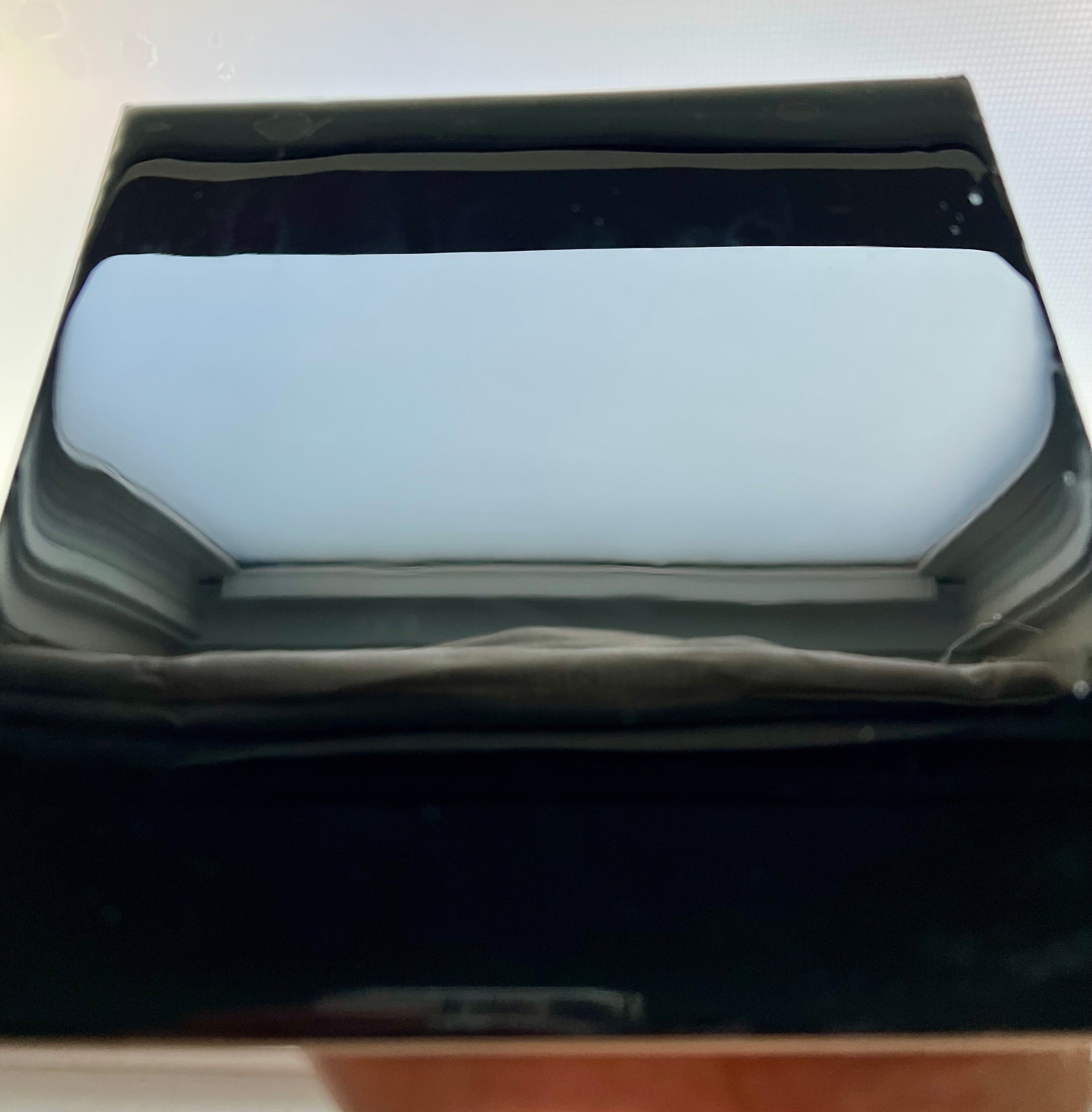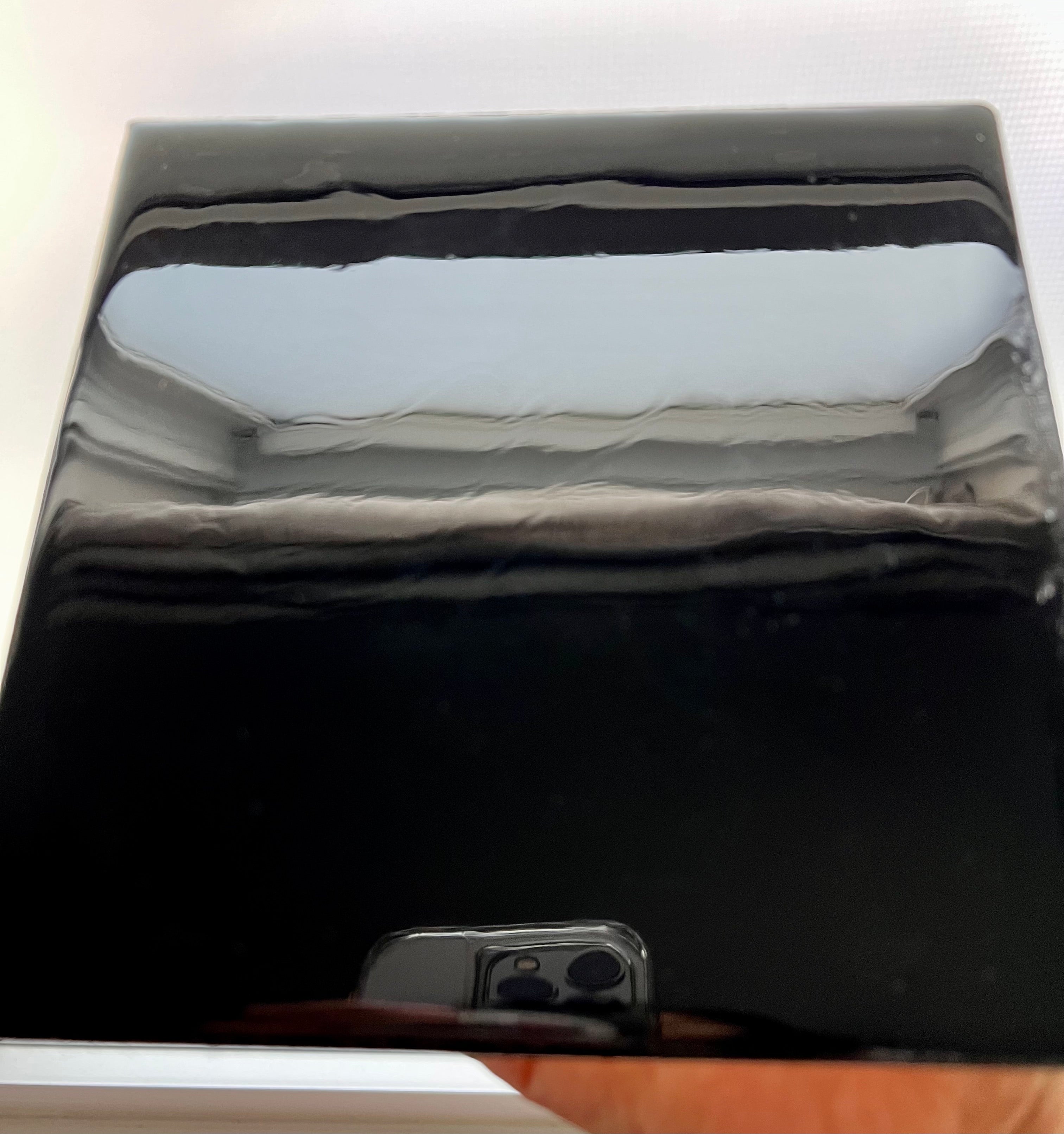What does moisture do to epoxy resin?
Fully cured epoxy resin is completely waterproof, it's true. However, if moisture gets mixed in while epoxy resin is still in its liquid state, it can interfere with the curing process and cause several issues:
- Cloudy Appearance: Moisture can cause the resin to develop cloudy, white, or hazy areas, impacting the clarity and visual quality.
-
Amine Blush: Moisture causes amines in the hardener to rise to the surface and form a waxy or greasy film on the cured resin.
-
Surface Imperfections: Moisture can result in ripples, waves, divots and a pock marked surface.
-
Incomplete or Slow Curing: Moisture can hinder the chemical reaction between the resin and hardener, leading to a tacky or soft surface that won't fully harden.
-
Weakened Bond: Moisture in the substrate can compromise the bond with the resin, preventing adhesion or leading to potential delamination.
-
Bubbles: Trapped moisture can create bubbles or foam within the resin during the curing process.

4 ways moisture can get into epoxy resin:
The most common ways that moisture can contaminate resin include:
- The addition of water: either accidentally from wet tools, open containers in a water bath, or water drops while measuring from wet bottles, or by tinting resin with a water based colorant, such as acrylic paint.
- Applying resin onto a wet substrate.
- Adding damp inclusions into the resin.
- Working with resin in high humidity.
Let's take a look at the effects of moisture on epoxy resin, one by one:
1. What Happens If Water Is Mixed Into Epoxy Resin?
If water contaminates the resin or hardener through wet tools or a water bath, the resin will take on a milky, cloudy appearance. This is why water based paints, like acrylic, aren't the best for tinting resin. Very fluid craft acrylics can make resin turn thick, clumpy and milky because they have such a high water content.
Here are a few examples demonstrating how water can affect a resin cure. The resin is all from the same batch of ArtResin, but contaminated with varying amounts of water.
Clockwise from left:
1. No water: A few microbubbles from pouring so thick, but otherwise properly cured and clear.
2. Water flicked over the resin with a wet paint brush: bubbles, divots and hazy areas.
3. Water dropped into the resin with a dropper: deep channels, trapped water leaking out and soft resin.
4. Water mixed into the resin: a milky appearance from thousands of bubbles, an uneven pockmarked surface, and significantly more bendy than the other samples.

To prevent water from contaminating the resin mixture, take the following precautions:
- Ensure tools, mixing cups and molds are dry.
- Leave caps on while the bottles are in a water bath.
- Don’t submerge the bottles in a water bath.
- Dry the bottles off thoroughly before you open them.
- Avoid using water based colorants such as acrylic paint to tint resin. Instead use a powder pigment, resin paste or a product like ResinTint that was designed specifically for resin. If you must use acrylic, use an artist quality, highly concentrated paint so you don't need to use much.
💡 To learn more about tinting resin, see our blog How To Color Clear Epoxy Resin.
2. Can You Apply Epoxy To A Wet Surface?
No, epoxy resin should not be applied over a wet surface. Whether it's a wet painting, wet wood, or paper still wet from the use of sealant or glue, applying resin over a wet surface can result in poor adhesion, bubbles, and an uneven cure.
The following two samples used ArtResin from the same batch over wood coasters painted with black acrylic paint. The paint in the sample on the left was not fully dry and the resin cured with noticeable waves and ripples. In contrast, the paint in the sample on the right was allowed to dry completely and the resin cured perfectly.

For the best results, the surface should be completely dry before applying resin:
- Allow paint enough dry time: Even if it seems dry to the touch, acrylic paint can take weeks to cure all the way through. The moisture can leach out into the resin and cause curing issues.
-
Wood should be thoroughly dry: In addition to curing issues, damp wood expands and contracts with fluctuating temperatures which may cause the resin to crack or delaminate. For peace of mind, use kiln dried wood or allow wood to air dry (approximately one year per inch of wood thickness.) A moisture meter is a good investment: aim for a reading of around 12%, although this can vary depending on the type of wood you use. Store wood indoors in a dry and climate controlled environment.
- Follow label instruction dry times for sealants, glues & adhesive sprays, gilding size, paint pens, gold leaf markers, or any other wet material you may use on your artwork, prior to applying a coat of resin.
3. Can You Put Fresh Flowers In Resin?
Yes, fresh flowers look beautiful in resin, however, they must be thoroughly dry first. If they contain any type of moisture, it can cause the resin to cure cloudy, and the flowers will eventually rot under the resin.
In the sample below, fresh leaves and flowers were embedded in resin without being properly dried. The moisture they've released into the resin has created bubbles, a rippled effect, and a hazy cure throughout.

Dry leaves, flowers and other objects that may contain moisture in silica gel as per the label instructions. Natural objects that may contain trapped air should also be sealed to prevent the air releasing into the resin as bubbles.
💡 To learn more about sealing and sealants, visit our blog: Should I Seal My Artwork Before I Resin?
4. How Does Humidity In The Air Affect Epoxy Resin?
Summer temperatures are often accompanied by high humidity. Humidity refers to the moisture content in the air, and it can have an impact on the curing process and appearance of the resin. When moisture is introduced into the mixture, you may end up with amine blush, characterized by an oily film or a cloudy appearance on the surface.
💡 To learn more about Amine Blush, please see our blog Amine Blush: What Is It And How To Prevent It.
The two samples below used ArtResin from the same batch. The first was allowed to cure indoors, in a climate controlled (air conditioned) environment of about 78F/25C. It cured perfectly clear, as expected, with no surface imperfections. The surface is hard, dry and smooth.

The second sample cured outdoors, covered, but with rain on and off during the 24 hour cure. The temperature ranged from 75-86F/24-30C with humidity levels outdoors ranging from 86-100%. The resin cured with noticeable ripples and waves throughout and developed amine blush - the resin feels tacky and waxy, with quite a bit of resistance as you run your finger along the cured surface. 
To achieve optimal results, maintain a consistent temperature and humidity levels below 80%, and preferably at 50%. Using air conditioning can help reduce humidity, and if you live in a highly humid climate, running a dehumidifier the day before resin work can be beneficial.
By controlling humidity levels and minimizing moisture exposure when measuring mixing, pouring, spreading and curing, you can help ensure a successful resin outcome with improved clarity and quality.
💡To learn more about using epoxy resin in summer weather, please see our blog: How Does Hot Weather Affect Resin?
We hope these results emphasize how moisture can prevent a perfect resin pour. For the best possible results, work in a dry environment (ideally 50% humidity but anything less than 80% is fine) and ensure that the resin and surrounding materials are free from moisture during mixing, application, and curing.
Questions? Comments? Please leave them below.
Do you want to know more about epoxy resin? Read our guides below:
- Does Epoxy Resin Expire?
- What's The Cure Time Of Epoxy Resin?
- Does Epoxy Resin Shrink?
- What Happens If Epoxy Resin Freezes?
- How Long Does Epoxy Resin Last?
- Does Epoxy Resin Crack?
- Is Epoxy Resin Self-Leveling?
- What's The Working Time Of ArtResin?
- What Does Epoxy Resin Smell Like?
- Is Epoxy Resin Waterproof?
- Types Of Epoxy Resin & Their Uses
- How Does Hot Weather Affect Epoxy Resin?
- How Does Cold Weather Affect Epoxy Resin?
ArtResin: The Original Epoxy For Resin Art.

